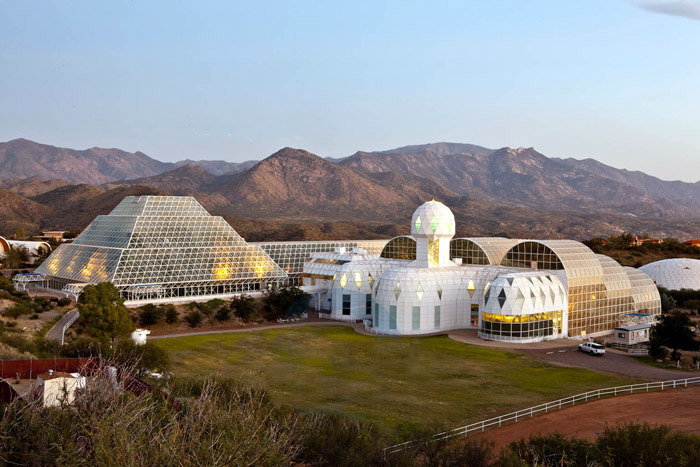
Сьогодні ми поговоримо про сталий розвиток міст.
Існує така точка зору: найкраще, що людина може зробити для природи – це триматись від неї подалі і жити в щільно населеному місті (це не жарт, а цитата містобудувальника та міського дизайнера Джефа Спека з TED відео:
Сталий розвиток міст − це дуже актуальна тема на сьогоднішній день. Кількість людей на планеті Земля збільшується експоненціально, і більшість з них хотіла б мати великий дім, машину, ще одну машину, або, принаймні, пральну машину.
Проте проблема не тільки в тому, що більша кількість людей займає більшу площу, − сьогодні ми опинилися в ситуації, коли людина з наступного покоління займає більше місця, ніж людина з попереднього (якщо до площі власної квартири приплюсувати місце на паркінгу біля роботи, біля дома і так далі).
Міста розростаються, поглинаючи оточуючі природні екосистеми, замінюючи їх натомість міськими екосистемами, від яких ми і самі не завжди у захваті. Певно, з цієї незадоволеності і ростуть корені тренду зворотньої урбанізації: наразі ознакою високого стандарту життя може служити будинок за містом і щоденні подорожі до роботи власним автомобілем.
(Процес розростання міста добре видно на картах віку будівель, Подивіться на цю карту Едмонтона, Канада)
Антоніо Каштель-Бранко вважає, що при розумному підході до міського планування, більша кількість людей на одиницю площі може означати вищу якість життя − бо сусіди можуть обмінюватися більшою кількістю матеріальних та нематеріальних цінностей та ідей.
Антоніо − професор Університету Лісабону та координатор міжнародних освітніх проектів в рамках програми Erasmus+. Нещодавно у Харкові він читав лекцію, розповідаючи про своє бачення містобудування, про сталий розвиток, а також про міжнародні освітні програми.
Згідно з основною парадигмою урбаністики Антоніо розглядає міста у якості соціоекологічних систем, якими можна керувати, підвищувати їх ефективність та рівень якості життя в них.

Замкнуті системи: уроки Біосфери 2
Прогятом декількох років академічної роботи в США Антоніо був задіяний у грандіозному проекті «Біосфера 2» під часпершого експерименту, котрий тривав з 1991 по 1993 рік.
Проект «Біосфера 2» був створений вже більше двох десятків років тому, але інших проектів такого масштабу в людській історії не було; до того ж результати досліджень з «Біосфери 2» лягли в основу формування міжнародної політики відношення до оточуючого середовища (зокрема, у складенні Кіотського протоколу) і продовжують впливати на хід наукової та політичної думки у світі.
«Біосфера 2» був великомасштабним експериментом створення замкнутої екосистеми, що імітує кліматичні зони нашої планети (від тропічних лісів до пустель), та дослідження можливостей її сталого існування. Екпериментальна будівля мала авангардний дизайн зі скла і металу та мала внутрішню площу 30.000 квадратних метрів. Створена людьми екосистема була розроблена таким чином, щоб бути самозабезпечуваною та повністю ізольованою від впливів оточення. Для забезпечення сталості системи та нульового зовнішнього впливу було використано безліч новітніх технологій та спеціальних винаходів і було вирішено стільки ж нестандартних задач.
Наприклад, для переробки біомаси в екосистемі «Біосфери 2» використовувалися таргани та терміти. На проектній фазі все виглядало нормально, але на практиці виявилось, що обраний вид термітів дуже полюбляв їсти спеціально розроблений для «Біосфери 2» силікон, що використовувався для ізоляції швів склометалевої конструкції. Тож, поки ці терміти не знищили ізоляційний шар, дослідникам довелось терміново шукати інший вид термітів, які б не так сильно любили силікон.
Одним з важливих висновків експерименту було усвідомлення, що якість повітря має найвищу важливість для екосистеми. Це твердження цілком відповідає здоровому глузду, але глибоке його розуміння прийшло через власний нелегкий досвід. Будівля «Біосфери 2» складалася фактично зі скла та металу, і металевий каркас відбивав 30% сонячного світла, що поступало. Цих 30% було достатньо для того, щоб рослини росли повільніше, споживали менше двоокису вуглецю і виробляли менше кисню, а ґрунтові бактерії швидше розмножувалися і поглинали більше кисню. Це призвело до того, що всередині будівлі рівень кисню був аналогічний гірському повітрю на висоті 5,000 метрів, тож дослідники, які прожили всередині будівлі протягом двох років експерименту, не завжди почувалися добре і мали проблеми зі сном.
Саме так до них прийшло розуміння, що повітря є одним з найважливіших показників якості життя, бо нестачу їжі і води людина здатна переносити набагато легше. У своїх мемуарах дослідники-резиденти писали, що у «Біосфера 2», де людина жила в умовах, максимально наближених до природних, і не була мотивована грішми, тим найважливішим, що визначало якість життя людей всередині, став двуокис вуглецю та його кількість у повітрі в даний момент.
Таке визначення ролі парникових газів стало ще одним поштовхом у світовому русі за нормування викидів в атмосферу, а також мало надихаючий вплив на Антоніо, і він присвятив багато уваги цьому питанню у своїй дисертиції та подальших дослідженнях.
«Місто винайшли для максимізації обміну та для мінімізації пересувань»
Річард Реджістер
Навіщо нам з вами думати про зменшення карбонових емісій до атмосфери?
Причина в тому, що чим раніше людство знайде варіант збалансованого споживання повітряного ресурсу, тим більше у homo sapiens шансів пристосуватися до зміни клімату і вижити, а не просто стати видом-експонатом для ілюстрації теорії еволюції Дарвіна.
Антоніо вважає, що висока щільність населення у містах − можлива відповідь на питання про зменшення емісій. Згідно результатів досліджень, об’єм карбонових викидів на людину зворотньопропорційний до кількості людей на квадратний кілометр. Сталий підхід до міського планування можна підсумувати наступною цитатою Антоніо Каштель-Бранко:
«Я вірю, що необхідно зменшувати міський періметр і запобігати розростанню міст. Міста повинні бути більш щільними. Щільність − це добрий показник для сталості, а також для якості життя. Наприклад, в Лісабоні деякі з найбільш густонаселених районів також – це райони з найдорожчою нерухомістю. Або, наприклад, Сохо у Нью-Йорку − там просто вражаючі ціни. Щільність не обов’язково є негативною рисою для якості життя, якщо вона добре зроблена. Щільність є дійсно важливою в концепції сталості.»
Підвищення якості життя в містах, де більшість з нас вже живе – доволі приваблива альтернатива популярній наразі деурбанізації, тобто придбання будинка за містом та щоденним подорожам до роботи, чи не так? А якими ви бачите сталі міста майбутнього?
__________________
Основне фото: CGP Grey



